Ancient Mysteries: The World's Earliest Cities
The Fragmentation of Knowledge Part 1 [Or, The case against over-specialization in theory based academics i.e. Archeology is an outdated field)] {Proof the archaeology is an outdated field as far as theory based academics (PH.Ds) goes. Almost all of a PhD's work in archaeology can be done by undergrad students or sherpas.}
Images: Neanderthals - Proof that the artist's perception influences his or her art
Also, I think Archaeologists are good at mechanical tasks (read Zen and the Art of Motorcycle Maintenance) but not theoretical tasks. So if you want an archaeologist to understand what something was made of or you want them to dig something out for you, then they can accomplish that task. Ask them to put a culture in context and they can't do that cause their training isn't in culture or civilizations. Nor do they read anything outside of their field so they can't know anything about the cultures they study as they start from assumptions which are often inaccurate (though there are exceptions in the (4000BC-2000AD period). Probably the best outline of our type of "civilization" would be Arnold Toynbees Outline of History.
For example: Ask an archaeologist and they will give you a ton of different reasons for why they classify neanderthals as a different species. The major one is the head/brain size...
Here is a graphic example of this theory (the one on the right is supposed to be Neanderthal)...
Yes, for Neanderthals in particular but it applies to all theories connecting humans to apes and other species through skull sizes, for example: pygmies will have smaller heads than a gorilla but its doesn't mean a gorilla is smarter, ...
ScienceDaily (Aug. 16, 2007) — Chance, not natural selection, best explains why the modern human skull looks so different from that of its Neanderthal relative, according to a new study led by Tim Weaver, assistant professor of anthropology at UC"For 150 years, scientists have tried to decipher why Neanderthal skulls are different from those of modern humans," Weaver said. "Most accounts have emphasized natural selection and the possible adaptive value of either Neanderthal or modern human traits. We show that instead, random changes over the past 500,000 years or so – since Neanderthals and modern humans became isolated from each other – are the best explanation for these differences."
Weaver and his colleagues compared cranial measurements of 2,524 modern human skulls and 20 Neanderthal specimens, then contrasted those results with genetic information from a separate sample of 1,056 modern humans.
The scientists concluded that Neanderthals did not develop their protruding mid-faces as an adaptation to icy Pleistocene weather or the demands of using teeth as tools, and the retracted faces of modern humans are not an adaptation for language, as some anthropologists have proposed.
Instead, random "genetic drift" is the likeliest reason for these skull differences.
All ancient human classifications are based on a few fossils and the variations in skull shape and size seem to be within modern day variation of our species to some extant [there is also mention of a bone here or there which is supposed to be further evidence of an evolutionary change but the main arguments are based around the skull sizes and the size of the brain that these cranial cavities could hold]
"Archaic forms of Homo sapiens first appear about 500,000 years ago. The term covers a divers...e group of skulls which have features of both Homo erectus and modern humans. The brain size is larger than erectus and smaller than most modern humans, averaging about 1200 cc, and the skull is more rounded than in erectus. The skeleton and teeth are usually less robust than erectus, but more robust than modern humans. Many still have large brow ridges and receding foreheads and chins. There is no clear dividing line between late erectus and archaic sapiens, and many fossils between 500,000 and 200,000 years ago are difficult to classify as one or the other. "
When you find one bone, according to statistics, you have a sample size of 1 (you can extrapolate from there the same way a fiction writer extrapolates part 7 of Star Wars, it can be done. It shouldn't be in the news section of a website). You can't make any conjectures about what a culture or society was like based on finding a bone. It's why I always say, "If you want to hear some good bullshit from someone who genuinely believes what they are saying, despite the tremendous amount of evidence proving them to be wrong, talk to an archaeologist or..." well, lets end it there shall we?
Ancient dog skull unearthed in Siberia: Although the snout is similar in size to early, fully domesticated Greenland dogs from 1,000 years ago, its large teeth resemble those of 31,000 year-old wild European wolves."This indicates a dog in the very early stages of domestication, says evolutionary biologist Dr Susan Crockford, one of the authors on the study." "The wolves were not deliberately domesticated, the process of making a wolf into a dog was a natural process," explained Dr Crockford of Pacific Identifications, Canada. This indicates a dog in the very early stages of domestication, says evolutionary biologist Dr Susan Crockford, one of the authors on the study. "The wolves were not deliberately domesticated, the process of making a wolf into a dog was a natural process," explained Dr Crockford of Pacific Identifications, Canada.
Based on one bone the guy literally describes a whole lifestyle and makes a historic determination i.e. that this was the "early stages of domestication", despite the tons of evidence showing a much older origins to humanity than textbooks will admit to.
I can make up theories based on one data point myself.
... Another dog found in the 'early stages of domestication' but DIDN'T make it into theories of the great Archaeologists...
"An illegal wolf-dog hybrid was found roaming wild in a residential neighborhood in Brooklyn, authorities said Thursday."
Police found the approximately 3-year-old, 53-pound female wearing a collar and chain near Elton Street and Vandalia Avenue in East New York on Tuesday evening, according to Richard Gentles, spokesperson for New York Animal Care and Control. "She's not a wild animal," Gentles told the New York Post. "Nobody's come forward to claim her," he added, noting that it is illegal to possess a wolf-dog hybrid in New York City. The animal, which was apparently being kept as a pet, will not be put up for adoption or be freed into the wild. She will be probably be sent to a sanctuary for unwanted wolf-dogs, a spokesman for Animal Care and Control told The Associated Press.
THEORIES:
1. A person gets zapped back into the deep past with his dog and it mates with a local wold and his kid inherits one of their half-dog/half-wolf hybrid who then goes out into the forbidden forest where there is a strange device. He accidentally trips a wire on the device and the last spurt of energy it had left was used to zap his poor pet dog into the future where he got caught by authorities.
2. This wolf-dog was frozen in ice with his prehistoric owners. When they came out and discovered society had changed they bought their hunting companion a collar as it turns out he's just a pet. Then they find out you can't even keep dogs in the early stages of evolution. SO they got rid of it.
My theories uses just as much evidence as a modern archaeologist uses, only I'm saying things that are absurd for an average person/thinker/observer (well, for about 95% of the US population). However, since I am only looking at one data point (i.e. one piece of evidence)... I literally have the same amount of evidence as the archaeologists who made up his random theory from finding one skull. So the key to a good story by an archaeologist is simply to keep it within the parameters of the accepted history books (which tend to originate, in some way, from Texas - though in the 1800's and early 1900's it was the British "archaeologists"). And you will be believed even if what you are saying contradicts good sense, why? Only because of the degree. Nowadays, literally anyone can become an archaeologist as the art of understanding culture & civilizations IN ANY HISTORICAL CONTEXT comes from reading AS MANY OF the best scholars on the subject that exist. Period. Not some school textbook.
It actually makes more sense (as per occam's razor law) that dogs already existed alongside humans and one inter-mated with a wolf. Rather than positing evolution of an entire species based on finding one skull.
Even if it wasn't for the following simple discoveries, assuming this skull wasn't an early part of dog evolution would still be absurd. But let's go on...
Here's how far back our finding of organically made clothes goes (we call them furs today and charge allot of money for them)...
'Amazing' bronze age burial site treasures on DartmoorSamantha Smith looks at what has been called the most significant historical find ever on Dartmoor - the discovery of an internationally important prehistoric burial site.
The 4,000-year-old remains of the Bronze Age grave or cist, which were found in a peat bog, are set to rewrite the history books.
BBC Inside Out has been given exclusive access to the results of the dig on White Horse Hill, which include an intact cremation deposit, an animal pelt, textiles, ear stud and beads.
Experts say it is unusual for so many organic objects to survive for this length of time in a grave from the Bronze Age period.
Dartmoor National Park Authority, the Wiltshire Conservation Service and other specialists have begun to piece together the story of this important discovery.
Work has moved to laboratories where painstaking investigation is taking place which, it is hoped, will reveal more about the lives of prehistoric people on Dartmoor.
Another report...
The discovery of a bronze age granite cist, or grave, in 2011 in a peat bog on White Horse Hill revealed the first organic remains found on the moor and a hoard of about 150 beads. As the National Park's archaeologists levered off the lid they were shocked by what lay beneath. The park's chief archaeologist, Jane Marchand, said: "Much to our surprise we actually found an intact cremation deposit [human bones] which is actually a burial alongside a number of grave goods. "What was so unusual was the survival of so many organic objects which you never usually get in a grave of this period, they've long since rotted away." Amongst the grave goods was an animal pelt, containing a delicate bracelet studded with tin beads, a textile fragment with detailed leather fringing and a woven bag .
Here is how far back our finding of spears goes...
400,000 year old spears found in Germany!: Little is known about the organic component of Lower and Middle Palaeolithic technologies, particular with respect to wooden tools. Here I describe some wooden throwing spears about 400,000 years old that were discovered in 1995 at the Pleistocene site at Schöningen, Germany. They are thought to be the oldest complete hunting weapons so far discovered to have been used by humans. Found in association with stone tools and the butchered remains of more than ten horses, the spears strongly suggest that systematic hunting, involving foresight, planning and the use of appropriate technology, was part of the behavioural repertoire of pre-modern hominids. The use of sophisticated spears as early as the Middle Pleistocene may mean that many current theories on early human behaviour and culture must be revised.
Think about it: If man was hunting 400,000 years ago... how far back could he have made friends with wolves? Isn't this evidence to support the simpler theory that this ancient skull was a chance mating between already present species of dog and wolf a simpler theory? Afterall, to go with the mainstream theory you not only have to use just one skull as your sample size you have to ignore a ton of physical evidence.
Archaeology as a degree in a university should be banned. With the above information in hand lets look again at the Neanderthal skull that I began this post with...
What would a Neanderthal look like today?
(Notice the variation in skull shape & size)
Simple explanations for why archaeologists have so many different classifications of "Humans":
Images: Neanderthals - Proof that the artist's perception influences his or her art
The Fragmentation of Knowledge Part 1 [Or, The case against over-specialization in theory based academics i.e. Archeology is an outdated field)] {Proof the archaeology is an outdated field as far as theory based academics (PH.Ds) goes. Almost all of a PhD's work in archaeology can be done by undergrad students or sherpas.}
Ancient Mysteries: The World's Earliest Cities
Note: The problem of Old Testament VS New Testament in US
The Colbert Report
Get More: Colbert Report Full Episodes,Indecision Political Humor,Video Archive
Answer: Colbert is referring to the dating system derived from the Gregorian calander and the Genesis version of creation (i.e. everything was created in 6 days and the 7th day God rested). The problem here can be solved from the New Testament ...
2 Peter 3:8 (KJV 1900) 8 - "But, beloved, be not ignorant of this one thing, that one day is with the Lord as a thousand years, and a thousand years as one day."
I.e. To say the earth was created in a 'day' is a metaphor. In other words , if you must be literal, it means 'one unit of time'... this leads to the possibility that the big bang theory is mythological projection (looking for ways to validate your childhood beliefs in different ways - such as the modernly accepted "scientific method" - often implied but rarely, if ever - or so it seems - used.)
Underwater Ruin: Estimated Date Of Creation... 10,000 BC!
Abstract;Submarine research surveys using SCUBA and sonic surveys reveal detailed topography similar to submarine, pyramidal features looking like a stepped pyramid off Yonaguni in Okinawa, Japan. The site is called Iseki Point(ruins site) as a leisure diving spot. Yonaguni Submarine Pyramid(YSP) is the major structure that stands under approximately 25 meters of ocean. Essentially, it has a cliff face like the side of a stepped pyramid, and dimensions of about 290m(length) by 120m(width) by 26m(height). Flat terraces, straight walls and its surface structure of walls with scars of tool marks driven in by a wedge on the structure are identified to be artificially fabricated. Appearance and size of YSP are similar to the biggest, ancient castles such as Shuri and Nakagusuku Castles in Okinawa Island, where they are called 'gusuku'. Roads associated with drainage canals were recognized, surrounding YSP, and that a retaining wall was found along a road. The southern point of the wall is composed of huge rock fragments. Stone tools and other artifacts were discovered from the sea bottom. Those evidence strongly shows that the YSP has not been manufactured by nature. It is identifie to be man-made. The formation age is estimated to be about 10,000 years ago based on 14C and 10Be age determinations. (author abst.)
With this quote Joseph Campbell began his study in mythology. What I want to examine in this post is just how far back we can trace civilization, cities or even just large communities.
During Joseph Campbell’s time certain excavations (such as Catalhoyuk) had just been uncovered which was beginning to push back the horizon of when our civilization actually began. Since the discoveries were made after he had finished his books he wrote about these recent archeological finds in his forward to the book on Primitive Mythology and pointed out how these discoveries had pushed back the timelines he had outlined in this book. In addition to this, other fascinating discoveries have completely destroyed the original timeline of civilizational development outlined in Campbell’s early overview. However, this was something he expected as he noted, "there will, no doubt, be as many astonishing disclosures during the seventies and eighties as there were in the decade of the sixties."(Forward from Primitive Mythology)
With the discovery of Catalhoyuk we now have evidence of an established villages cluster of at least 10,000 people living together over hundreds of years. The village life is firmly established around 7,500 B.C. So this spreads out the cradle of civilization from the fertile crescent more towards Central Asia and it also pushes back the dates of the earliest cities. The first examples of developed pottery is actually found (rather suddenly) in catalhoyuk which suggests that its was a growing and innovative society.
With the Mesopotamian civilization firmly established in textbooks as the source of civilization everyone has heard of the later cities of Babylon and Egypt. The newer archeological finds, such as Catalhoyuk from the 1960's, haven't quite made it into school or college textbooks. However,museums seem to be catching up to the discoveries of the last century.
Next is a group of cities made of brick which seem to have materialized from nowhere;
"The so-called Harappa stage of the great cities of Mohenjo-daro, Chanhu-daro, and Harappa (c. 2500-1200/1000 B.C), which bursts abruptly into view, without preparation, already fully formed and showing many completely obvious signs of inspiration from the earlier high centers of the West (i.e. fertile crescent), yet undeniable signs, also, of a native Indian tradition – this too already well developed. As professor W. Norman Brown has suggested, a native Indian center (i.e., a mythogenetic zone) somewhere either in the south or in the Ganges-Jumna area would seem to be indicated, where the characteristically Indian traits, unknown at this time farther west, must have come into form." [Ibid - Page 435]
Other interesting facts about the cities of Mohenjodaro and Harappa is that the bricks used in making them are uniform, i.e. they had a system to measure and weigh stuff accurately. They had their own sewage system, public baths and the structure of the architecture suggest an egalitarian society, but there are no signs of architectural development. That means these cities arrived fully developed and then went into decline. There are no in-between cities or towns where the Mohenjodaro/Happan style of architecture is first used. In other words, these are colonies or offshoots from some main civilization which was, possibly, already in decline as the architecture quality went down over time later appearing fully developed. Some off these potential "root cities" probably lie beneath the Indian Ocean. Such as this one...
"The carbon dating of 7500 BC obtained for the wooden piece recovered from the site changes the earlier held view that the first cities appeared in the Sumer Valley [in Mesopotamia] around 3000 BC," said B Sasisekaran of India's National Science Academy.The images gathered over the past six months led to a surprising discovery - a series of well-defined geometric formations were clearly seen, spread irregularly across a nine-kilometre (five-mile) stretch, a little beneath the sea bed."
Some of them closely resemble an acropolis - or great bath - known to be characteristic of the Harappan civilisation.
The Gulf of Cambay is one of the largest tidal areas in the world - with a current of very high velocity - and so it is conceivable that the area may well have submerged an entire ancient settlement, Mr Ravindran said to the BBC.
I have covered a bunch of evidence of underwater structures in an earlier post called Underwater Ruins. It also has a video of an Indian Archeologist who finds evidence of some underwater structures and links it to the Mahabharata which describes a city that was submerged in some long ago time with vibrant images of life in the city as well as some romanticized images of a city of gold.
Take a look at these amazing pillars that were recently uncovered just short distance from Catalhoyuk called Gobekli Tepe; [Images of Gobekli Tepe and article quotes are from here]
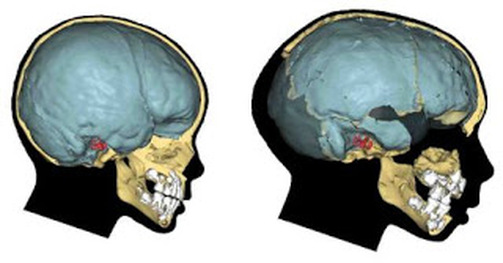
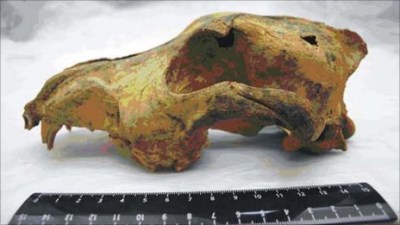
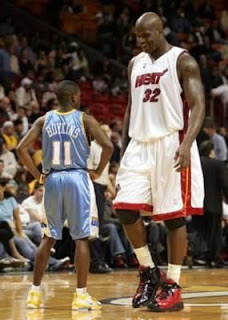

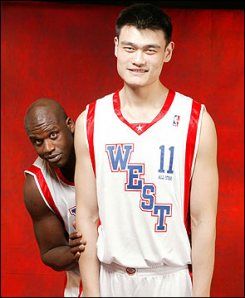
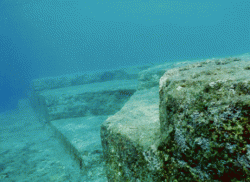
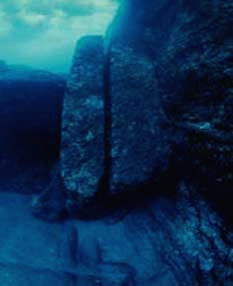
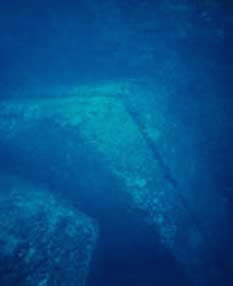
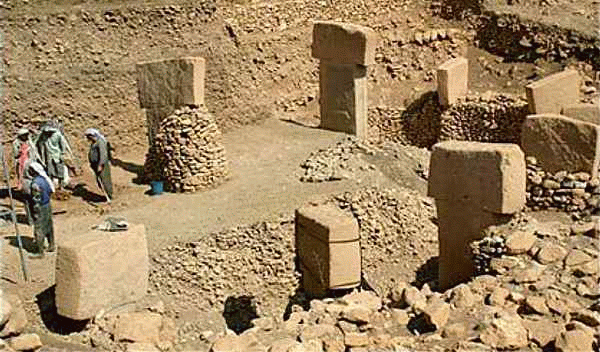
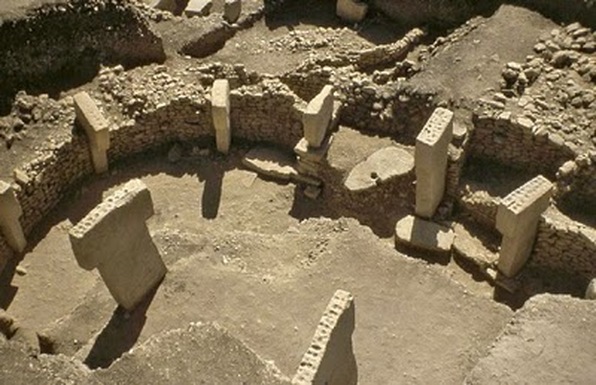

 RSS Feed
RSS Feed
